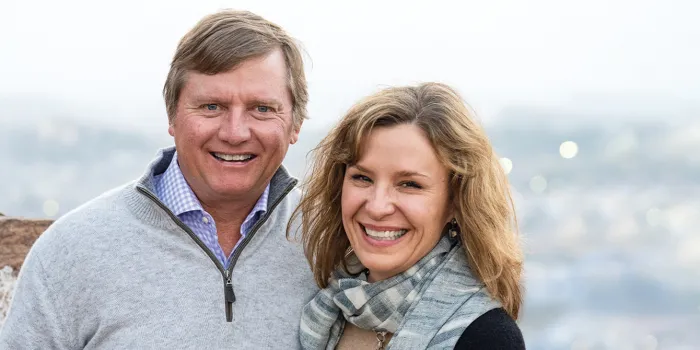When Kim and Scott Martin’s son, Scott Jr., was born with severe hemophilia B in 2003, the treatment landscape was extremely limited.
“Back then, we only had one recombinant option,” says Scott, a Houston-based private investor. “Today, so much has changed. We now have five or six recombinant options for hemophilia B, as well as gene therapy. Hemophilia A patients also have a gene therapy option, as well as many other choices.”
A Legacy of Giving Back
Helping to fund research into better treatments has been near and dear to the Martins ever since they first got involved with their local Lone Star Chapter of the National Bleeding Disorders Foundation (NBDF, then called the National Hemophilia Foundation), soon after their son was born.
The Martins were the founding chairs of the first bleeding disorders walk in Houston and were instrumental in organizing a family camp for their chapter.
After attending the Bleeding Disorders Conference in 2004, the couple were inspired to get involved on a national level.
Scott joined the board of NBDF in 2014 and went on to serve as chair in 2021–23. During his time on the board, “there was a big push within the organization to focus more on research for our patient population,” he says. Then, “an anonymous donor passed away and left his almost $3 million estate to NBDF,” Scott says. “His stipulation was that 100% of the money go to research.”
The Power of Bleeding Disorders Research Funding
In 2022, NBDF used that donation to launch Pathway to Cures (P2C), a venture philanthropy fund focused on investing in emerging biotech companies developing cures, therapies, and technologies to support the inheritable blood and bleeding disorders community. Though NBDF is the parent organization, P2C operates independently with a volunteer board of directors, a team of investors, scientific researchers, and health care professionals.
Read More:5 Things You Should Know About Giving to NHF
The Martins became founding donors to P2C, and Scott currently serves as the board chair. The couple say their involvement with P2C is especially meaningful when they think about how much their child’s life has improved thanks to better treatments. “Today, our son is in college, he infuses himself once a week, and he’s able to play basketball, golf, and tennis,” Kim says.
Adds Scott: “We are so grateful for the improvements in care and the sacrifices of so many others over the past few decades, which have benefited our son and all current patients.”

